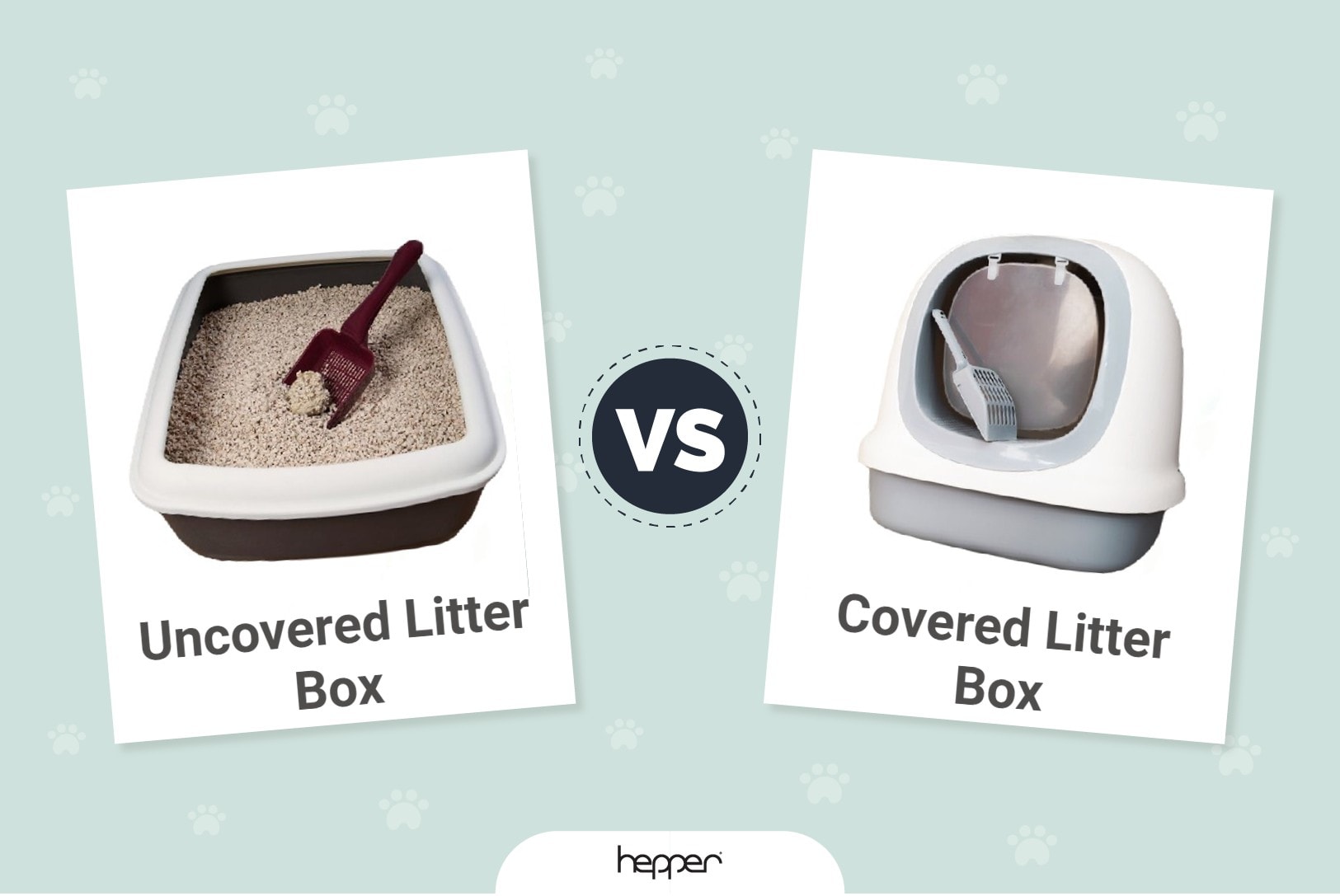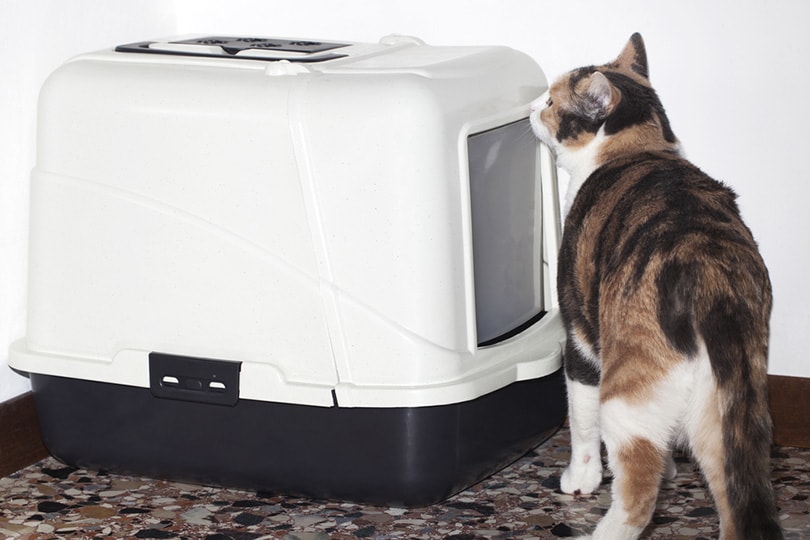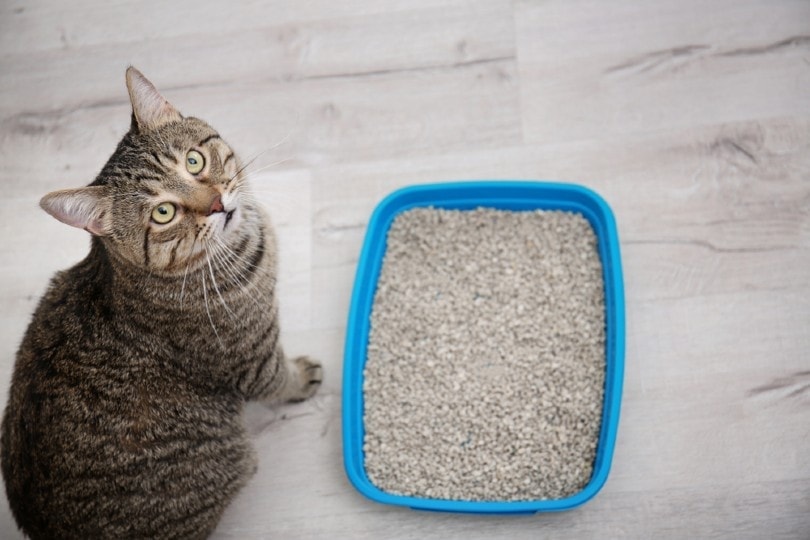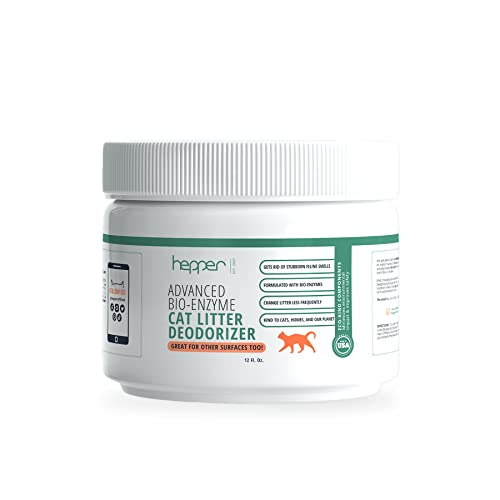Covered vs. Uncovered Litter Box (2024 Comparison): Which One Is Better for My Cat?
Updated on

The cat world changed in a big way in 1947 when Ed Lowe 1 invented disposable litter. No longer did pet owners have to resort to inferior alternatives or let their cats out at night. Uncovered litter boxes were the first receptacles for this material. While it made having a feline companion easier, it soon became evident that cat litter brought its set of issues, mainly the stuff that didn’t stay in the box. Hence, the great debate between covered and uncovered litter boxes.
You may wonder which is the better option for your kitty. It’s a worthwhile question if it can affect your pet’s health or its use of the box. Let’s delve deeper into this question and help you make the best choice for you and your cat.
Overview of Covered Litter Box
One of the most annoying problems with litter boxes is what the cat tracks outside them. You may have the odor issue well in hand. However, the bits of litter in your home will make it evident a cat is living here. That’s where covered litter boxes step up to the plate.

How a Covered Litter Box Works
Covered litter boxes are enclosed with an opening big enough for your pet to enter and exit. It keeps the litter your kitty typically kicks out of the box inside of it instead. Most have snap lids to keep them in place. You don’t have to use the cover, but you at least have the option. Some products may have a charcoal filter in the lid. The enclosure will contain the odors. The filter makes it less disagreeable inside the box.
Other boxes have a door that your cat must go through to get in the box. Most are removable for pets that are wary of them. You’ll also find products that are less conspicuous so that you can put them in the main living quarters instead of a bathroom or laundry room. Many manufacturers boast of the privacy it offers your pet.
On the downside, you have more to clean, at least occasionally, with a lid and optional door. It may not be as easy to do routine maintenance if the cover is hard to take off from the base. And you certainly don’t want to handle it 2 any more than you must. You should also consider the added expense. The litter box may cost more, especially if you buy one with replacement filters. This can add up if you have more than one cat.
When to Opt for a Covered Box
A covered box does an excellent job of keeping the litter inside and not on the floor around it. It won’t keep your pet from tracking, but at least you won’t find a heap of litter outside of it. That’s often a dealmaker from many pet owners looking for a solution to this problem. It applies to the odors, too. You may find the added expense of replacement cartridges a godsend.
If you’re short on space, the last thing you want to do is fill it with things that aren’t aesthetically pleasing, like a litter box. You can choose a product that looks less like a litter box and more like a piece of furniture. It’s an excellent solution that handles both needs.
- Litter containment
- Odor control
- Aesthetically pleasing options
- More maintenance
- Harder to clean
- More expensive (products with filters)
Overview of Uncovered Litter Box
The uncovered litter box is the original design, although manufacturers have upped their game on several fronts. Today’s products are more durable. They come in different sizes and styles to accommodate your cat’s needs. They have come a long way since their humble beginning over 70 years ago.

How an Uncovered Litter Box Works
The premise is the same as the covered models. This style is open, allowing for easy access for you and your cat. That makes cleaning a lot less cumbersome without a lid to remove. It’s less of a hassle for the day-to-day maintenance and emptying it every couple of weeks. Their straightforward designs make them easier to handle with less chance of spilling the contents.
On the downside, there’s all that litter getting kicked out of the box. That means more work for you to do. Some manufacturers make pans with higher sides. Unfortunately, it won’t keep the more zealous felines from pitching the litter outside of it. That also applies to the odors. Let’s face it: an uncovered litter box isn’t aesthetically pleasing, no matter where you put it.
When to Opt for an Uncovered Box
Barebone products are quite affordable. with many styles and sizes from which to choose. That’s an advantage if you have a small space for a litter box. The value-priced products allow you to set up another place for your cat to use if you have more than one. If it breaks, it costs nothing to replace it. You’ll find litter boxes with shorter sides for kittens, seniors, and pets with mobility issues to use.
The affordable price comes to the forefront if you need a temporary solution. Lower-end products can serve their purpose without costing a lot. And you’re sure to find the right size pan for whatever space you have to fill.
- Affordably priced
- Excellent choice for senior pets and those with mobility issues
- Many available styles and sizes
- Scattered litter
- Aesthetically unpleasing
Other Factors to Consider
Let’s get down to some more practical considerations that may not be on your radar when deciding between the two types of litter boxes. Ideally, you should be scooping it every day, especially if you have more than one cat. You might be able to get away with it with an uncovered box, but a covered one is a different story. If you haven’t had issues with that aspect of cat ownership, you might if it gets too stinky to use it.

Then there’s the well-meaning cat with lousy aim, leaving you a bigger mess with an uncovered litter box. A product with higher sides can help, but you can avoid it altogether with a covered box. Either way, it means more cleaning. We’d rather it involve the covered pan than the floor or carpet around it.
We’ve discussed some aspects of cost involving your initial purpose and replacement filter cartridges. While they help with odors, they make the purchase of a covered box more expensive. Or do they?
Americans spent over $1.1 billion on litter in 2018. The amount spent on the clumping type alone is estimated to increase by over 77% by 2025. Let’s put that in context with your choice.
An uncovered box undoubtedly will lose more litter each day than a covered one. Like cartridges, it adds up. Sure, you can scoop up the unsoiled litter and put it back in the pan. However, think about the extra work and mess involved. We suggest you weigh all these factors when deciding on which one to get.
Sometimes even the best litter box setup needs a helping hand in combating invasive smells. Our Hepper Advanced Bio-Enzyme Cat Litter Deodorizer naturally breaks down odors at the source. This effective litter additive can help all types of cat litter last longer, saving you money, and is safe for all life stages. Best of all, it's 100% biodegradable and fragrance-free.
- Bio Enzymatic Cat Litter Freshener - Smart formulation uses natural ingredients eliminating cat...
- Save Money - Stuff for cats isn’t the cheapest. With this litter box odor eliminator, you’ll...
Conclusion
As humans’ relationships with their pets have evolved, so too have the product choices, even for something as mundane as a litter box. If you have a pet that makes maintenance a chore, you may find a covered litter box will be the best one for your cat. However, remember that the choice comes down to your kitty. As long as it’s usable and you keep it clean, we’re sure your pet will use the one you provide.
Featured Image Credit: (L) Axel Bueckert, Shutterstock | (R) winnond, Shutterstock












